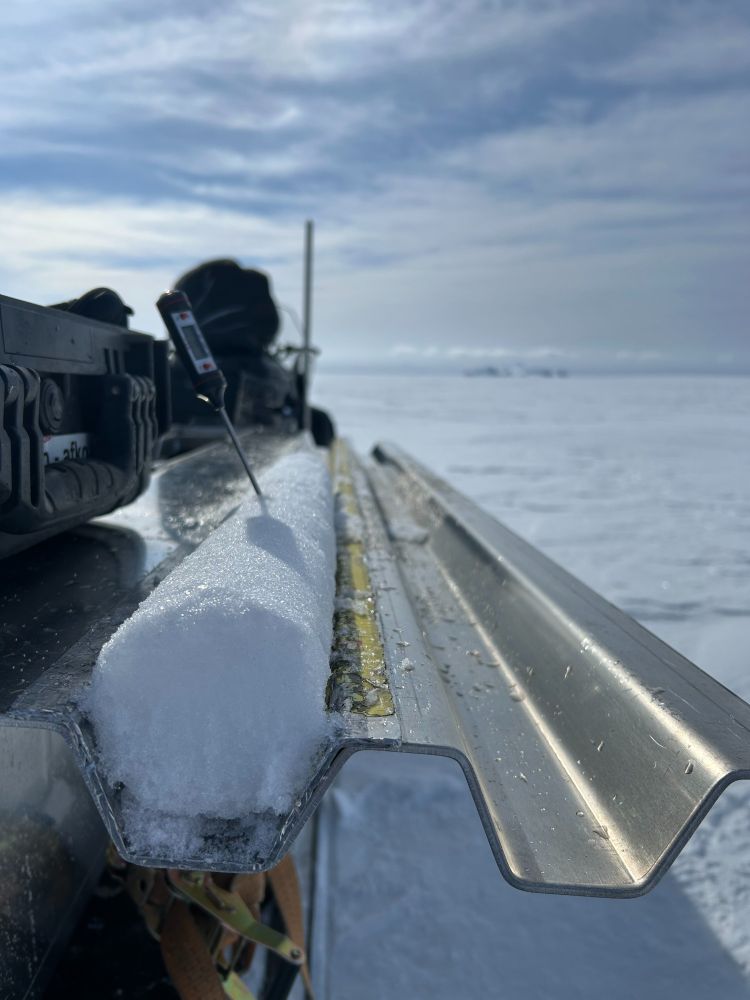
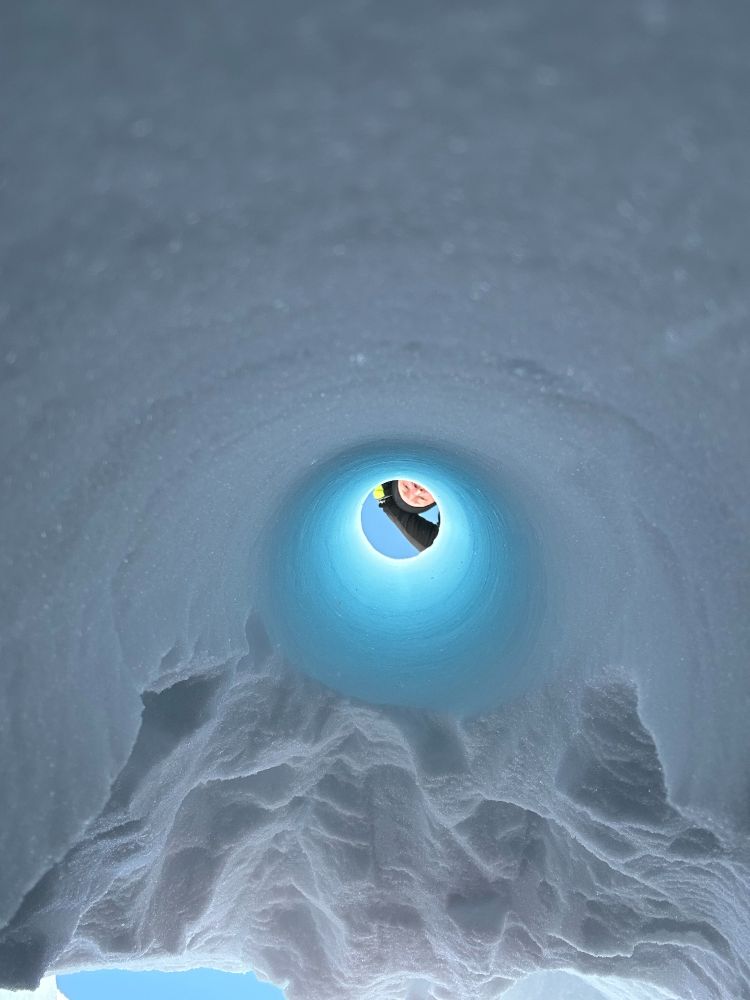

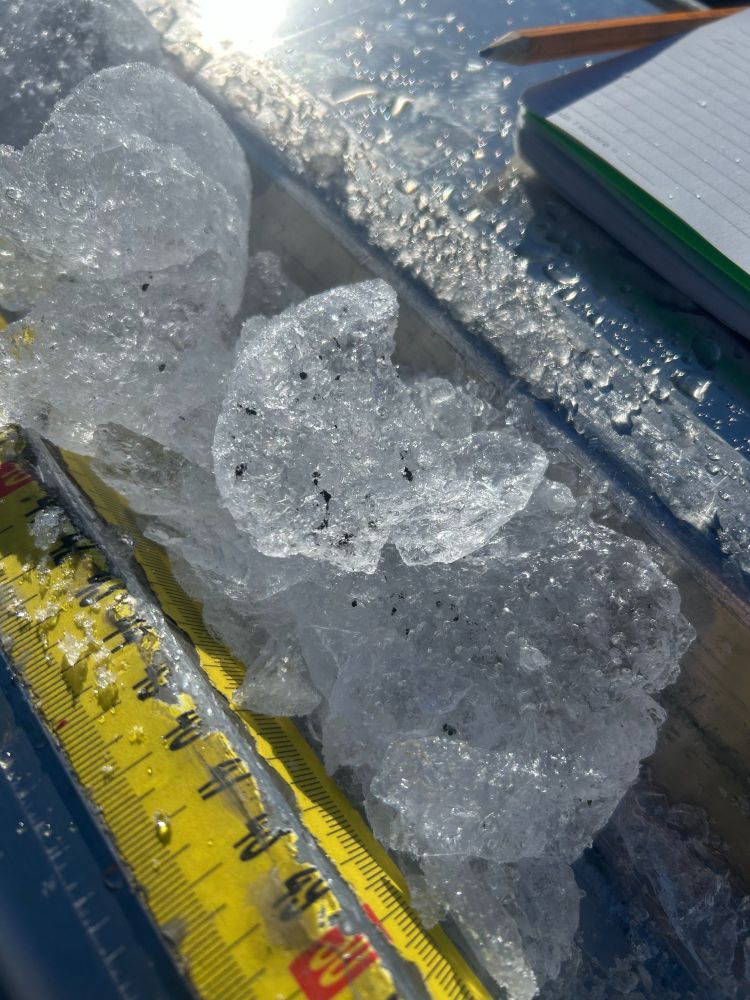
The mass balance season has started. First up was Langjökull with 28 smb points, 1 met station and 3 GPS stations. Extremly nice weather. Winter snow seems to be close to normal this spring. Up next is Vatnajökull.
24.04.2025 22:00 — 👍 3 🔁 0 💬 0 📌 0@andrigun.bsky.social
Glaciers, seasonal snow, snow-ice albedo and field work among other things. Chairman of the Icelandic Glaciology Society. Hydrological research at Landsvirkjun.




The mass balance season has started. First up was Langjökull with 28 smb points, 1 met station and 3 GPS stations. Extremly nice weather. Winter snow seems to be close to normal this spring. Up next is Vatnajökull.
24.04.2025 22:00 — 👍 3 🔁 0 💬 0 📌 0
Dust is a relevant but variable contributor to snow darkening & snowmelt *every year* in the headwaters of the Great Salt Lake.
The latest Snow HydRO lab research, led by PhD student Otto Lang, fills a critical gap by quantifying spatial & temporal patterns of dust on snow.
doi.org/10.1029/2024...
A look at how #Arctic sea ice responded to the recent southerly flow of excessive heat and moisture. This same event resulted in the sudden anomalous temperature spike around the North Pole...
Data is from the 3-km AWI SIC-LEADS algorithm using AMSR2 satellite.
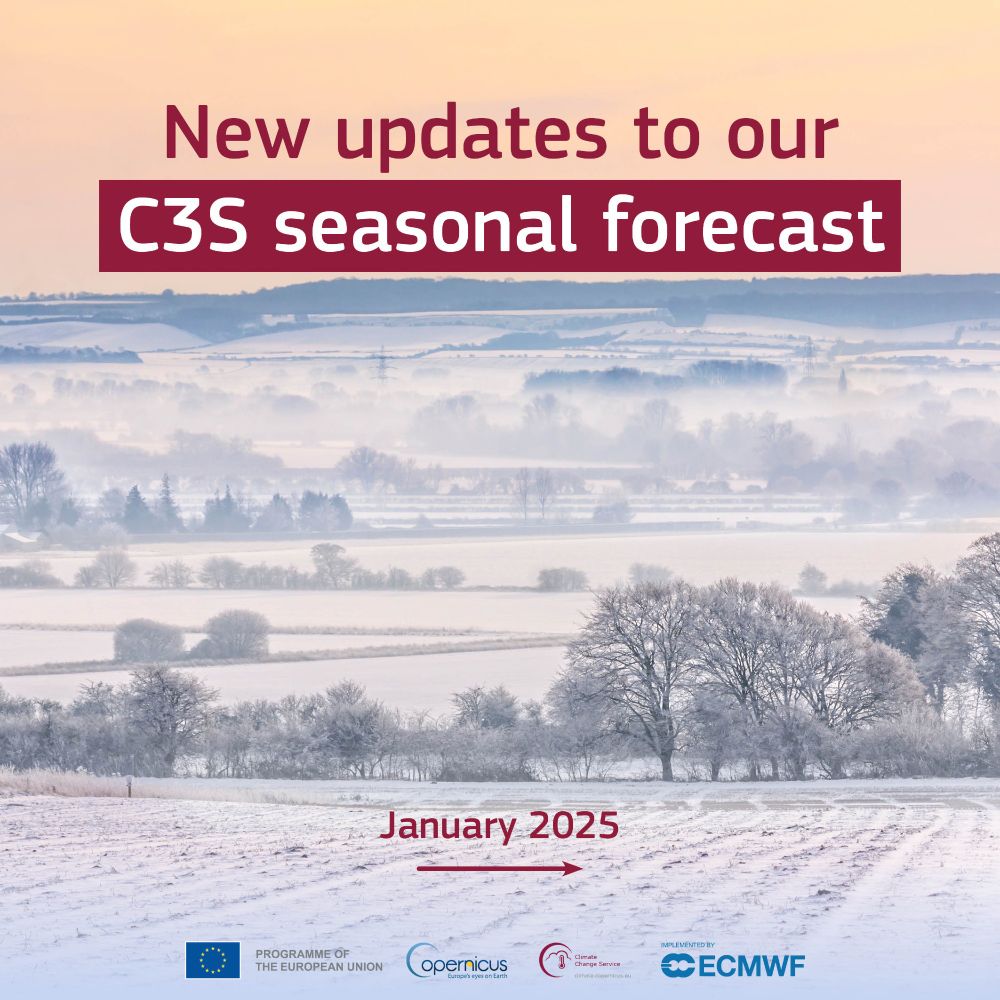
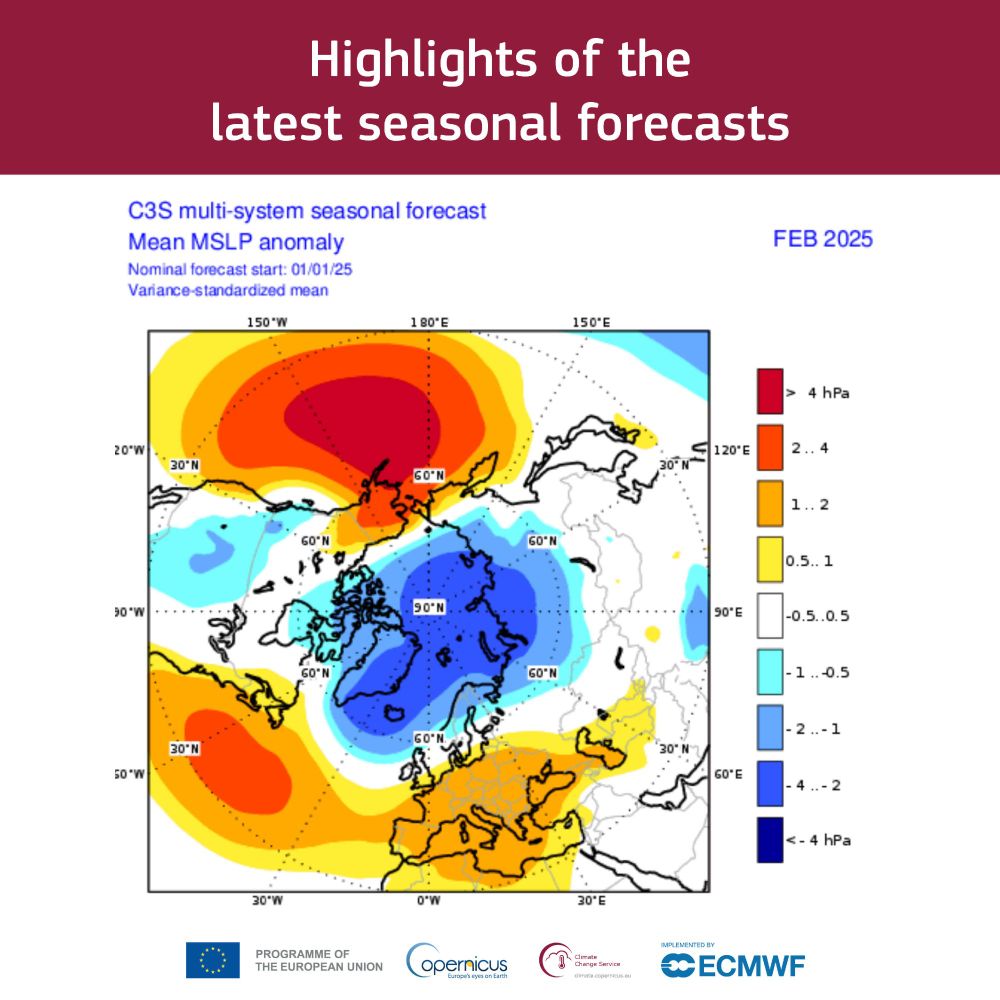
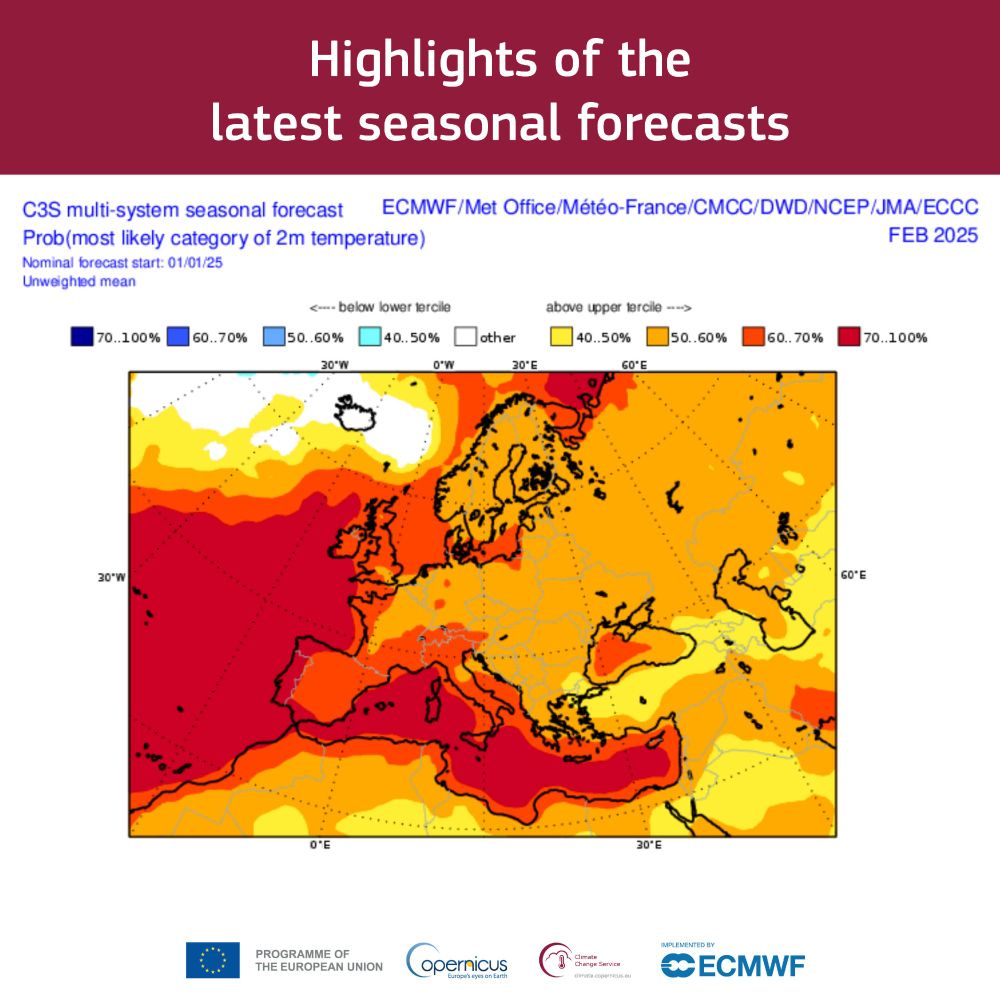
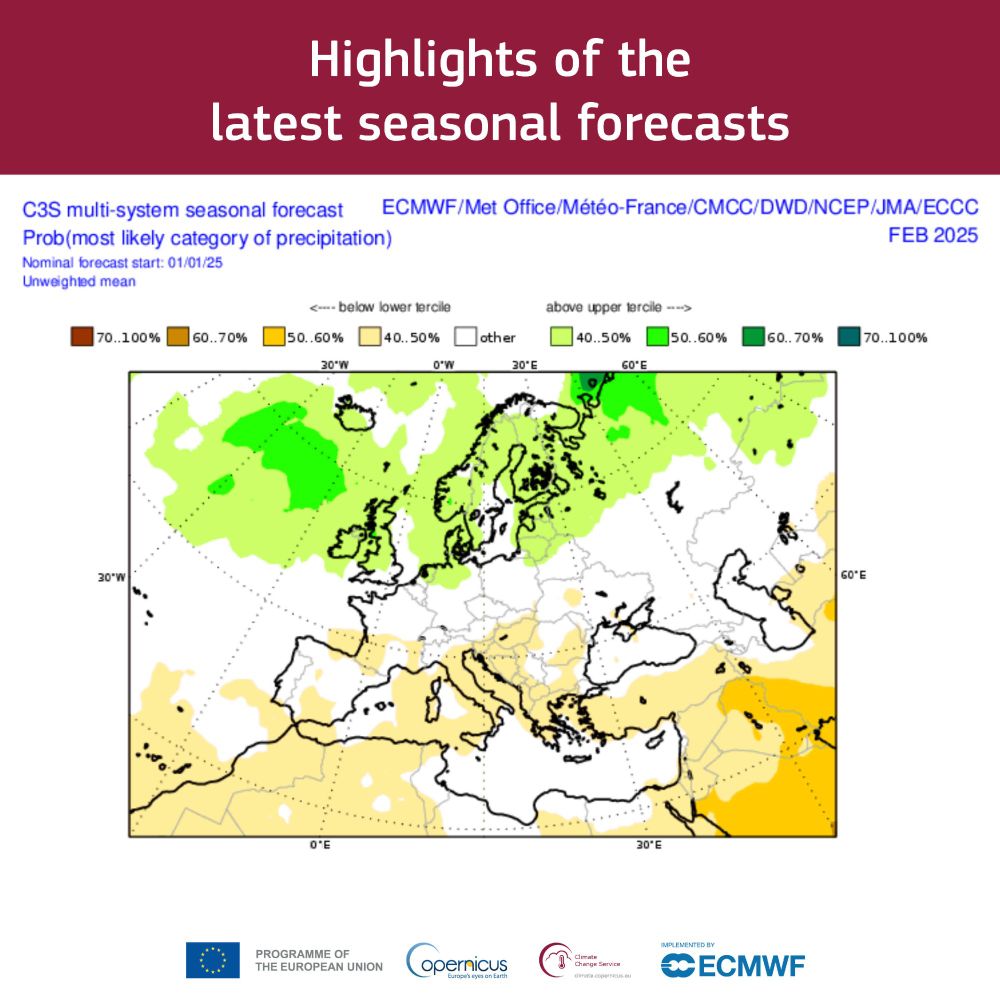
📊 🌡️ The January 2025 edition of the #CopernicusClimate multi-system seasonal forecast is now available.
You can find data, plots and highlights of the forecast here: climate.copernicus.eu/seasonal-for...
#C3S
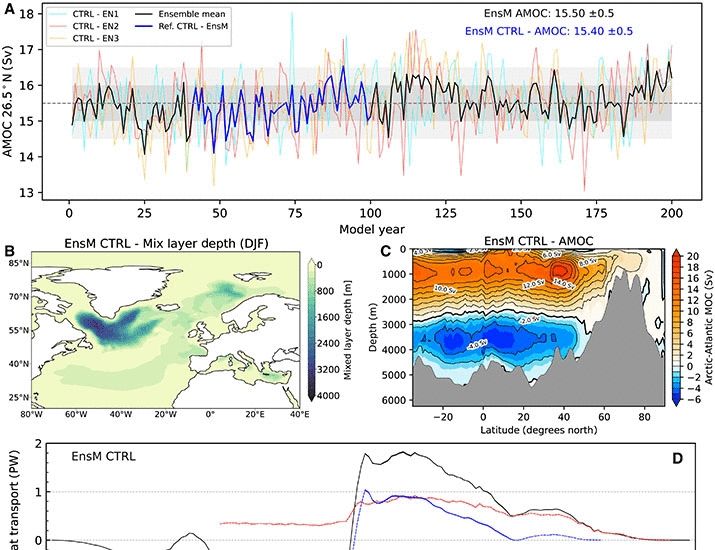
New study revisits climate impacts of an #AMOC slowdown 🌍🌊. Freshwater hosing experiments reveal the Irminger Basin as the most sensitive site, causing the largest AMOC weakening.
www.science.org/doi/10.1126/...

Some thoughts on the use of AI/ML in climate modeling...
@realclimate.org
¡AI Caramba! www.realclimate.org/index.php/ar...
Simulated reconstruction of December #Arctic sea ice thickness since 1901. Large interannual variability, but watch what happens in recent years...
Information about this data: doi.org/10.1175/JCLI.... Data set only available through 2010.
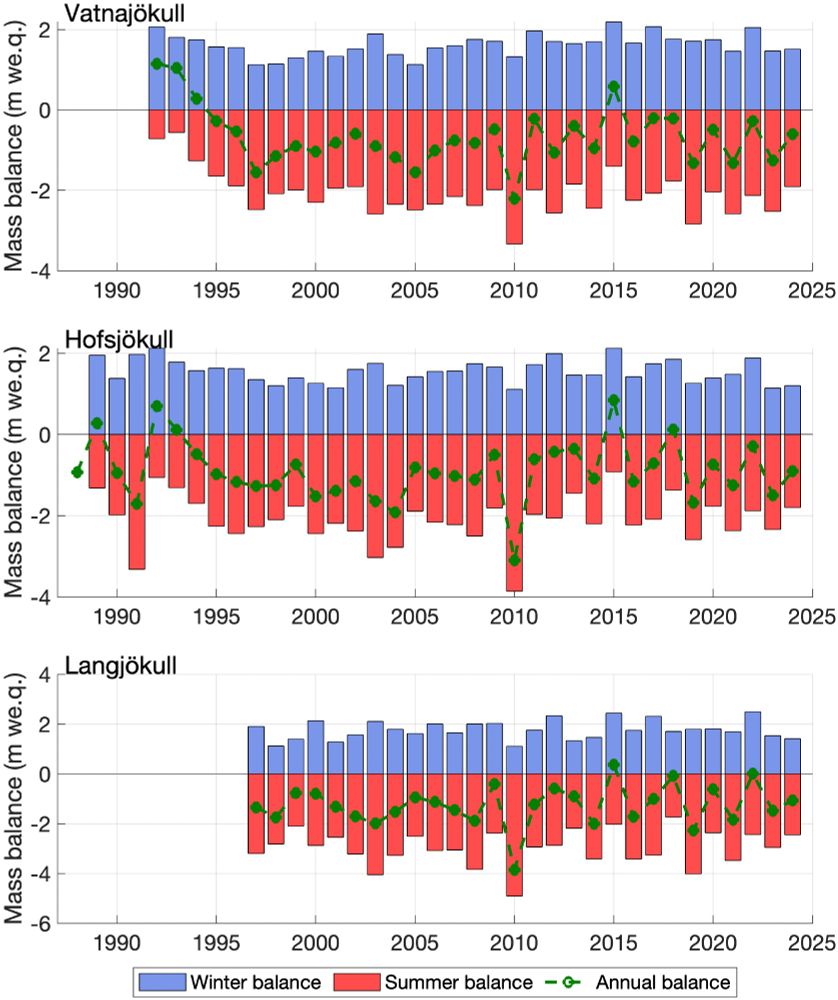
Summary of the results for Icelandic glaciers for the glaciological year 2023-2024.
23.12.2024 20:06 — 👍 9 🔁 1 💬 2 📌 02023-2024 annual mass balance results:
Vatnajökull: Annual loss -0.4m, near avg of past decade.
Hofsjökull: Annual loss -0.9m, continuing decades-long decline.
Langjökull: -1.02m annual loss, 18% below long-term mean.
Mýrdalsjökull: 13–26% below historical avg.
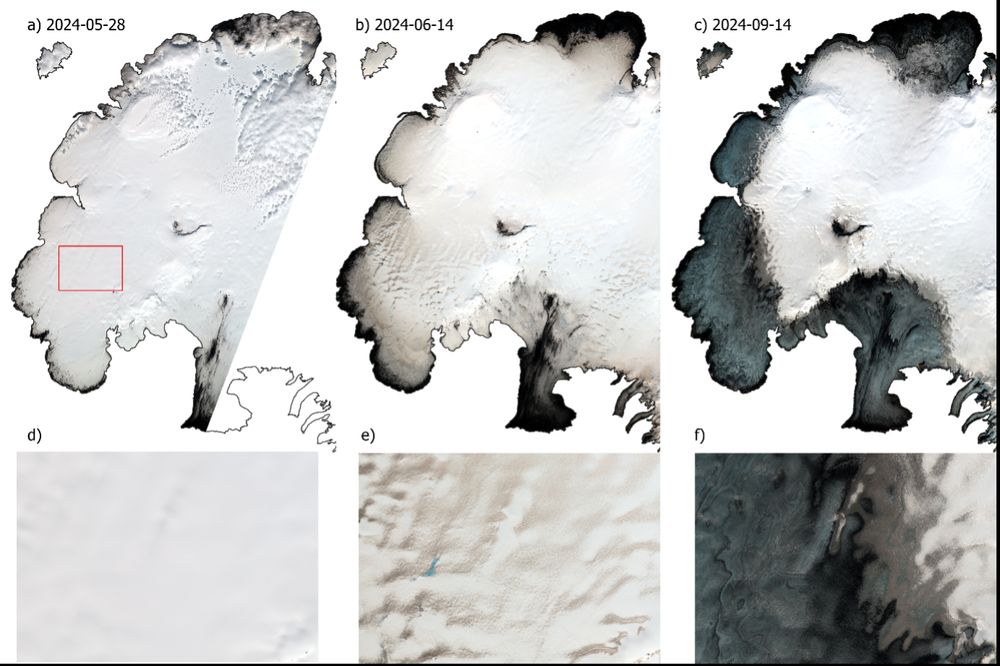
Dust at Vatnajökull summer 2024. Data from @esa.int Sentinel 2.
23.12.2024 20:06 — 👍 3 🔁 0 💬 1 📌 0Sand/ash deposition in late May sped melting in parts of southern Vatnajökull. Sentinel-2 images showed deposits by mid-June. These deposits, combined with sunny conditions, increased lower-elevation melt rates despite summer snowfall events.
23.12.2024 20:06 — 👍 1 🔁 0 💬 1 📌 0Summer 2024 melting was delayed by cold weather. June 2–10 saw 10–15 cm of snow on glaciers, halting melt for ~10 days. A mid-August cold spell further slowed melt. June snowfall was 2x historical avg for many glaciers (CARRA data).
23.12.2024 20:06 — 👍 1 🔁 0 💬 1 📌 02023–2024 snow accumulation:
Vatnajökull: Below avg, except N areas like Brúarjökull.
Hofsjökull: 13–17% below avg.
Langjökull: Mostly below avg, better in ablation zones.
Mýrdalsjökull: 20–35% below avg, linked to dry southern weather.
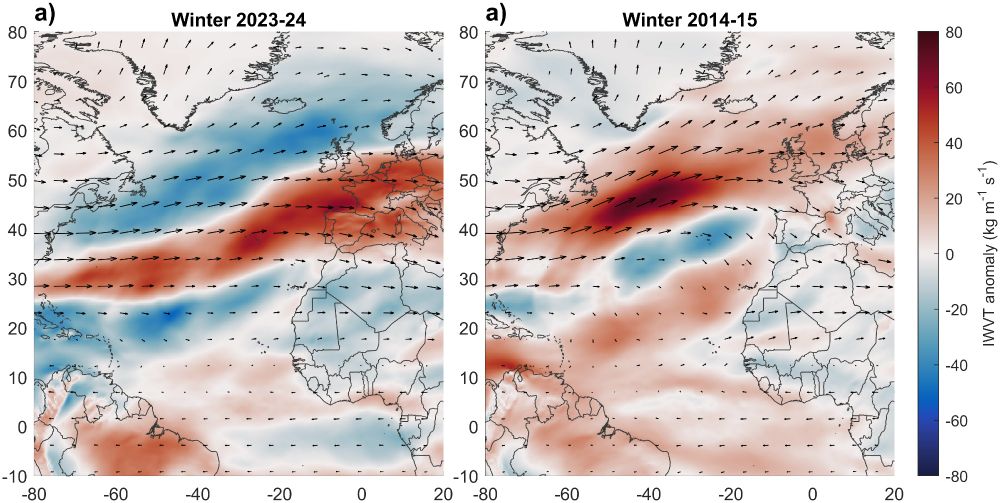
Intergrated water vapor tranport and wind direction at 500 hPa for winter. Data from @copernicusecmwf.bsky.social
23.12.2024 20:06 — 👍 1 🔁 0 💬 1 📌 0Weakened southerly winds and shifted storm tracks caused Iceland to miss its usual moisture transport. Glaciers like Vatnajökull, Hofsjökull, & Langjökull, reliant on southerly winds, had reduced snow. Drangajökull & Tröllaskagi fared better with northerly patterns.
23.12.2024 20:06 — 👍 1 🔁 0 💬 1 📌 0Winter 2023–2024 was cold and dry, with little precipitation. Dry conditions persisted into Dec, with minimal snow from low-pressure systems. Precipitation remained below average in Jan, Mar, and Apr. Most fell as snow, not rain, which typically accelerates glacier melt.
23.12.2024 20:06 — 👍 1 🔁 0 💬 1 📌 0First post on Bluesky, lets see how it goes.
In 2023–2024, Iceland’s major glaciers—Vatnajökull, Hofsjökull, Langjökull, Mýrdalsjökull, and Tröllaskagi—were measured for mass balance. Over 100 points collected for the main glaciers.